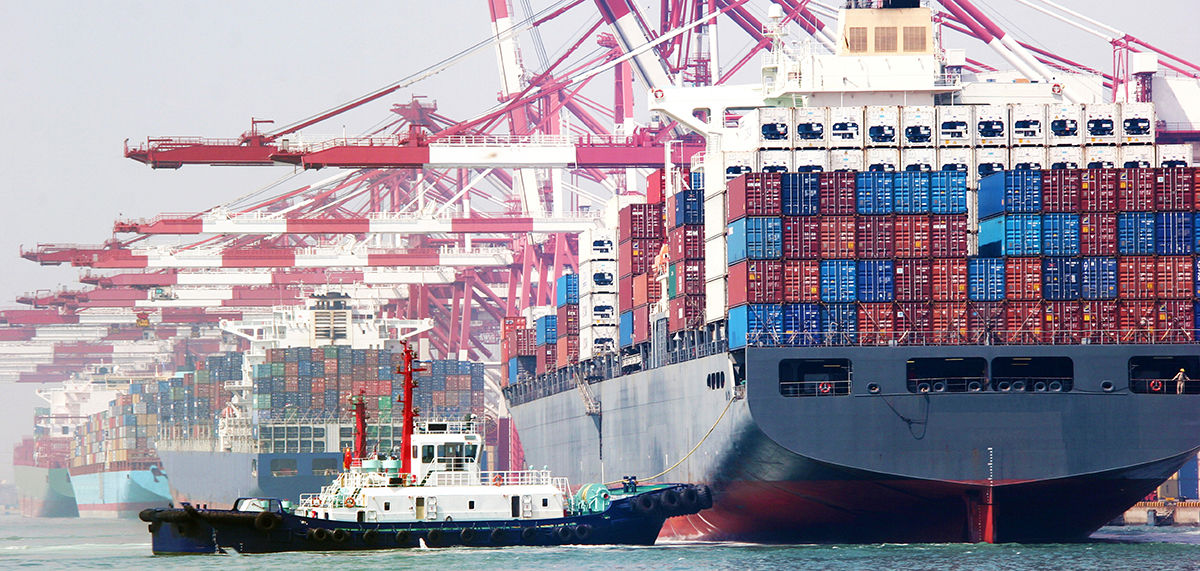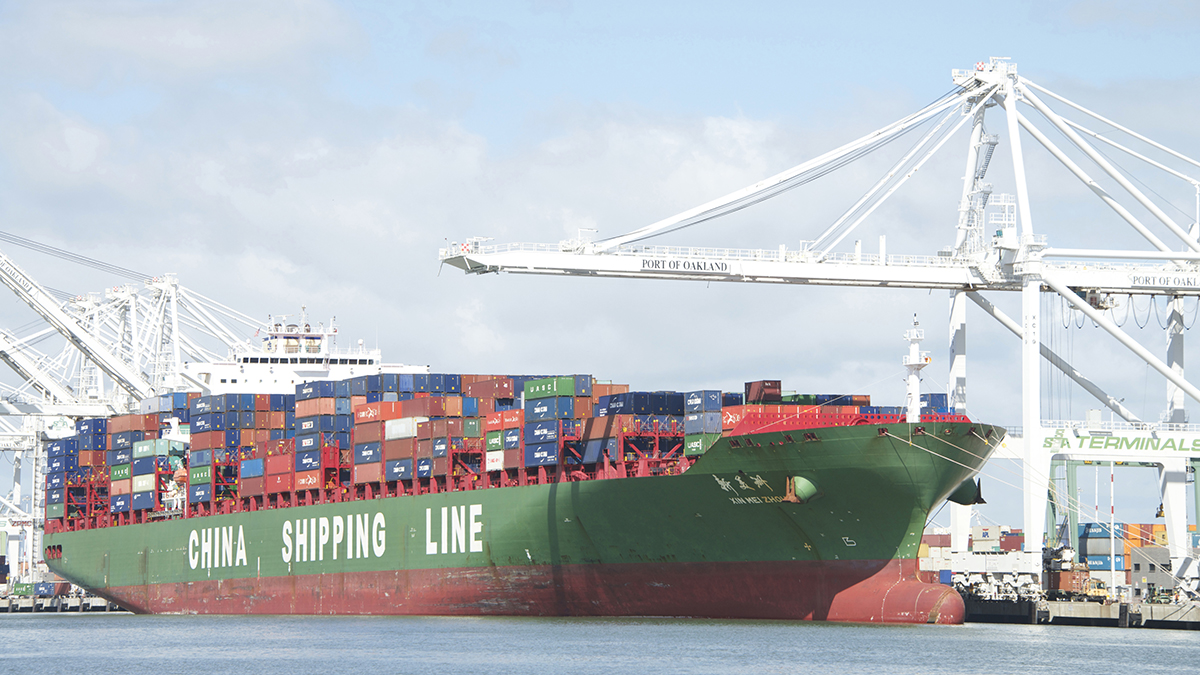

Make no mistake, the tariffs on imports will radically affect the U.S. economy and will have a broad-reaching impact on the pricing, the demand for and the availability of American-made goods.
Let’s take a look at how the tariffs being implemented by the current administration will impact the retail industry in the U.S.
General Impact of Tariffs and a ‘Trade War’
The difficulty of evaluating the impact of tariffs lies in the increasingly complex relationships between international supply chains and the almost universal utilization of imports in domestic production. In fact, it is almost physically impossible given that most companies rarely source 100 percent of components or products they make in the same country in which they make it.
Without overstatement, when national policy changes disrupt the ability to import finished consumer products, key components or parts, the use of tariffs can jeopardize the whole value proposition for local businesses. Even companies that believe they source domestically could be in for a rude awakening. This is particularly true when analyzing their impact on the retail industry.

Such value chains carry risk in both directions. For example, when the United States increases its tariff on yarns and fabric from China, some of the costs of that tariff may ultimately be borne by American resource suppliers that sell the necessary materials to Chinese manufacturers. It is safe to say, “pick a company, any company,” virtually any multinational you can imagine is making products that incorporate value added from around the world—very much including the United States—regardless of where final manufacturing takes place. For those companies that both import and export, the pain will clearly be felt on both sides of the equation.
Individual companies can expect to feel some pain in their supply chains. For those that rely on relationships with partners in China, South Korea or another country not exempted from the tariffs, sourcing and procurement practices must be assessed from the ground up and may have to be completely revamped.
This impacts everything from finance and tax strategies to operational issues around establishing new warehouses and shipping/receiving operations in other locations. Every factor must be reviewed and measured against the potential risks.
Small but important industries could be crippled by tariffs and trade wars. A deep dive into the product makeup may expose how much this would hurt American businesses and the extent of the potential vulnerabilities. In some cases, it’s just a question of volume. For example, there are critical global value-chain links, like the fact that there are no other markets for that product. In the longer run, we might worry that highly differentiated U.S. firms could lose their brand equity with Chinese and other foreign consumers.

Tit-for-Tat Retaliation
At the outset, it’s important to understand that the taxes being imposed on Chinese goods aren’t a one-way road. In fact, when the White House put tariffs on the initial $34 billion in Chinese goods, China instantly imposed retaliatory taxes on the same dollar amount of American products.
In short, the tariffs being imposed won’t just up the cost of imported goods, but they will also decrease the demand for and availability of American-made products in China.
So, how will the brewing trade war impact American retailers?
As Alex Boian, VP of government affairs at the Outdoor Industry Association, told the New York Times, “You keep adding tariffs upon tariffs and it really is difficult to see a way that this does not hit retail prices.”
The Cost of Taxing Chinese Imports
To assess the actual toll these tariffs will take on retailers who do business in America, there needs to be an understanding that taxing goods which are outright Chinese imports are only part of the equation. The direct impact will drive an increase in prices on a wide range of goods sold in the U.S., but many tariffed goods are components of other products. Tariffs imposed on plastics and aluminum, for instance, will impact everything from electronics retailers to home décor and fashion.
A recent study conducted for the National Retail Federation, based on the original list of tariffs on products, found that tariffs on $50 billion in imports would cause a $2.9 billion drop in U.S. gross domestic product and the loss of 134,000 U.S. jobs.

Recent Changes in Legislation
So, what does this mean for the apparel industry? The reality is that the taxes already implemented are just the tip of the iceberg.
Further escalation of tariffs on fashion-related goods will further negatively impact the price points many retailers are able to offer on apparel and accessories.
“With the $200 billion worth of tariffs,” Sourcing Journal reports, “goods including cotton, the majority of yarns used in textile production, woven and nonwoven fabrics, handbags and hats, would have faced new 10 percent duties.”
Decreased Profits for Retailers
The equation is not high math. When the economy takes a major hit and people lose jobs, consumers buy less, and retailers lose profits. The National Retail Federation reports, “Adding tariffs on $100 billion in imports would bring the total to a $49.2 billion loss in GDP and 455,000 jobs lost. The bottom line pencils out that four jobs would be lost for every job gained, according to the report.”
Beyond the Storefront
Of course, tariffs do have their supporters, with many believing levies on imported goods—particularly from China—are long overdue. The Department of Homeland Security (DHS) reported 34,143 import seizures for intellectual property rights violations in 2017, an 8 percent increase over the previous year. Based on the manufacturers’ suggested retail prices, this amounted to a total financial impact of $1.3 trillion, or $3.8 million worth of intellectual property rights violations per day.
These make up the majority of all import seizures and, according to DHS data, China is the top country of origin (although it is important to note that country of origin is not necessarily the same as where the seized goods were produced). “When you look at that, something has to change,” said Jennifer Diaz, international trade attorney and founder of Diaz Trade Law. “China on the whole needs to understand how important intellectual property compliance is, and they need to respect it more.”

Others believe, however, that the problems tariffs can create outweigh the benefits. According to Dr. Emily Blanchard, associate professor of business administration at Dartmouth’s Tuck School of Business, the risks of U.S.-borne tariffs are significant and the effects can be more widespread than they initially appear. “Often, the conversation focuses on just those firms that are making the goods facing the tariffs in question,” she said. “The simplistic view is that, when we import less from overseas, that is good for local business. Of course, that has never been true for the whole economy—while a few import-competing firms will gain from facing weaker competition, the aggregate cost of tariffs outweigh the benefits to those few. Domestic exporters, for one, stand to lose.”
Despite the very recent withdrawal of China’s proposed 25 percent tariff on U.S. soybeans, uncertainty may continue to fall. Last year, China bought about one-third of American soybeans, to the tune of $14 billion. Soybean prices dropped 4.5 percent after the tariffs were announced.
Also included in the recent Chinese tariff withdrawals is the pork market. This is relatively small in dollar terms, but hogs are important because China buys a lot of stuff from pigs that nobody else buys. The market can be particularly volatile for American hog farmers and prices will react quickly to loss of demand from China. The market for offal, for example, is reliant on Chinese consumers, which is reflected in current prices. But should farmers lose access to Chinese consumers, it is not clear who else would be willing to purchase offal and at what price.
U.S. vintners are also concerned about losing access to the lucrative Chinese market, where a rising middle class has developed a taste for American wines. “Vintners of the world are busy building brand equity in China,” Blanchard said. “Losing market share today may last.”
Unfortunately, even if the U.S. government does scale back on its tariff threats, the damage may have already been done. The moment you start talking about increasing tariffs for U.S. businesses, the risk is already there. The fact is that U.S. companies that import are
impacted, period.”
Risk Management Considerations
No matter the size of their business, risk managers should be looking closely at their supply chain. If their firm is global, managers are well-advised to know what is being imported and from which country of origin, then they can layer in the risks and the hazards.
Compliance within the supply chain is also critical, and it’s suggested that risk managers conduct a supply chain audit. Importers should understand the customs valuation and classification of the goods being imported and/or exported what is being reported to customs, and the liability they are taking on.
Companies should also look for ways to redesign products or find other sources for key goods so as not to fall victim to newly imposed tariffs. Who you’re buying from and whether there are alternatives should be forefront in the considerations. Think about who you’re selling to and whether you really need to enter the U.S. market, or if you can take advantage of foreign trade zones or bonded warehouses.
Get creative with your supply chain. Everyone is going to have to be nimbler and more flexible as they try to figure out what truly impacts them and how to get around it. One way is to get creative and understand if a company is importing to consume or importing to export elsewhere, such as importing to Miami to export to South America. These arrangements could be altered or streamlined to avoid increasing costs.
Another thing risk management can do, Blanchard said, is wait. Policies can change just as quickly as they are enacted. “Wait on the investment, on new hiring, on undertaking any kind of fixed cost, to the extent that is feasible,” she said. “It may not be ideal for the overall economy or employment, but sometimes it’s the smart play for the businesses in question.”
Blanchard also suggested diversifying risks by minimizing exposure to the United States as much as possible. “If you’re a multinational corporation and you have affiliates in China that are sources, that means you may not want to source inputs just from the United States for fear that China may apply retaliatory tariffs,” she said. “If you are a multinational firm with foreign affiliates in China and you’re selling to the United States, you should probably look around for your plan B market, to see if there is another place to sell.”
Companies should also examine their growth initiatives with a top-down review by risk management. A firm needs to know its business inside and out in terms of the costs and where products and materials came from. From there, they can make the best strategic decisions. T&ID

